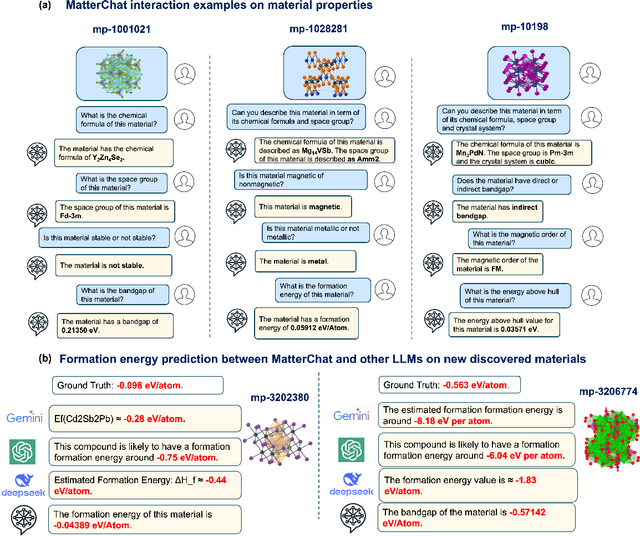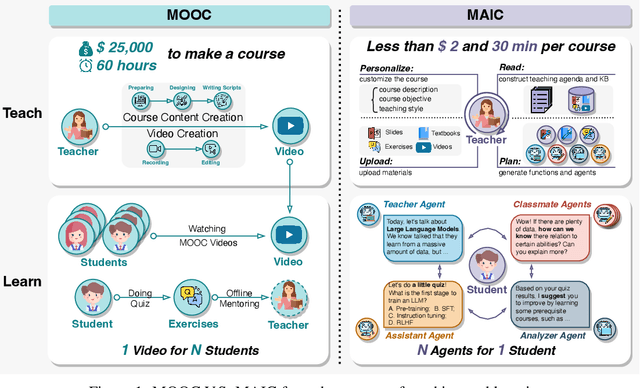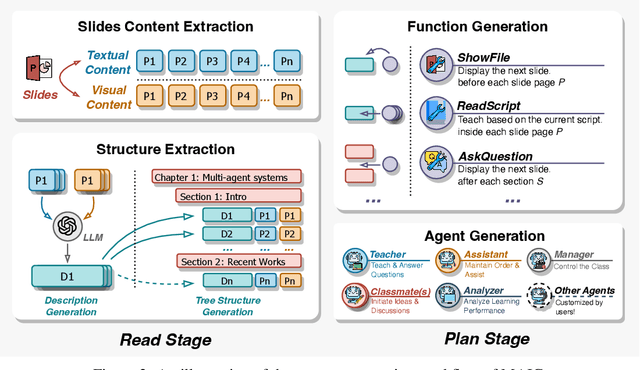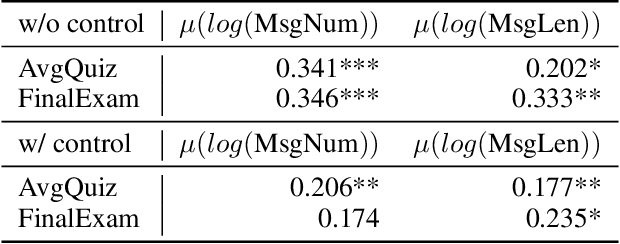Jie Cao
Towards Robust Defense against Customization via Protective Perturbation Resistant to Diffusion-based Purification
Sep 19, 2025Abstract:Diffusion models like Stable Diffusion have become prominent in visual synthesis tasks due to their powerful customization capabilities, which also introduce significant security risks, including deepfakes and copyright infringement. In response, a class of methods known as protective perturbation emerged, which mitigates image misuse by injecting imperceptible adversarial noise. However, purification can remove protective perturbations, thereby exposing images again to the risk of malicious forgery. In this work, we formalize the anti-purification task, highlighting challenges that hinder existing approaches, and propose a simple diagnostic protective perturbation named AntiPure. AntiPure exposes vulnerabilities of purification within the "purification-customization" workflow, owing to two guidance mechanisms: 1) Patch-wise Frequency Guidance, which reduces the model's influence over high-frequency components in the purified image, and 2) Erroneous Timestep Guidance, which disrupts the model's denoising strategy across different timesteps. With additional guidance, AntiPure embeds imperceptible perturbations that persist under representative purification settings, achieving effective post-customization distortion. Experiments show that, as a stress test for purification, AntiPure achieves minimal perceptual discrepancy and maximal distortion, outperforming other protective perturbation methods within the purification-customization workflow.
MoA: Heterogeneous Mixture of Adapters for Parameter-Efficient Fine-Tuning of Large Language Models
Jun 06, 2025Abstract:Recent studies integrate Low-Rank Adaptation (LoRA) and Mixture-of-Experts (MoE) to further enhance the performance of parameter-efficient fine-tuning (PEFT) methods in Large Language Model (LLM) applications. Existing methods employ \emph{homogeneous} MoE-LoRA architectures composed of LoRA experts with either similar or identical structures and capacities. However, these approaches often suffer from representation collapse and expert load imbalance, which negatively impact the potential of LLMs. To address these challenges, we propose a \emph{heterogeneous} \textbf{Mixture-of-Adapters (MoA)} approach. This method dynamically integrates PEFT adapter experts with diverse structures, leveraging their complementary representational capabilities to foster expert specialization, thereby enhancing the effective transfer of pre-trained knowledge to downstream tasks. MoA supports two variants: \textbf{(i)} \textit{Soft MoA} achieves fine-grained integration by performing a weighted fusion of all expert outputs; \textbf{(ii)} \textit{Sparse MoA} activates adapter experts sparsely based on their contribution, achieving this with negligible performance degradation. Experimental results demonstrate that heterogeneous MoA outperforms homogeneous MoE-LoRA methods in both performance and parameter efficiency. Our project is available at https://github.com/DCDmllm/MoA.
HAD: Hybrid Architecture Distillation Outperforms Teacher in Genomic Sequence Modeling
May 27, 2025Abstract:Inspired by the great success of Masked Language Modeling (MLM) in the natural language domain, the paradigm of self-supervised pre-training and fine-tuning has also achieved remarkable progress in the field of DNA sequence modeling. However, previous methods often relied on massive pre-training data or large-scale base models with huge parameters, imposing a significant computational burden. To address this, many works attempted to use more compact models to achieve similar outcomes but still fell short by a considerable margin. In this work, we propose a Hybrid Architecture Distillation (HAD) approach, leveraging both distillation and reconstruction tasks for more efficient and effective pre-training. Specifically, we employ the NTv2-500M as the teacher model and devise a grouping masking strategy to align the feature embeddings of visible tokens while concurrently reconstructing the invisible tokens during MLM pre-training. To validate the effectiveness of our proposed method, we conducted comprehensive experiments on the Nucleotide Transformer Benchmark and Genomic Benchmark. Compared to models with similar parameters, our model achieved excellent performance. More surprisingly, it even surpassed the distillation ceiling-teacher model on some sub-tasks, which is more than 500 $\times$ larger. Lastly, we utilize t-SNE for more intuitive visualization, which shows that our model can gain a sophisticated understanding of the intrinsic representation pattern in genomic sequences.
TT-DF: A Large-Scale Diffusion-Based Dataset and Benchmark for Human Body Forgery Detection
May 13, 2025Abstract:The emergence and popularity of facial deepfake methods spur the vigorous development of deepfake datasets and facial forgery detection, which to some extent alleviates the security concerns about facial-related artificial intelligence technologies. However, when it comes to human body forgery, there has been a persistent lack of datasets and detection methods, due to the later inception and complexity of human body generation methods. To mitigate this issue, we introduce TikTok-DeepFake (TT-DF), a novel large-scale diffusion-based dataset containing 6,120 forged videos with 1,378,857 synthetic frames, specifically tailored for body forgery detection. TT-DF offers a wide variety of forgery methods, involving multiple advanced human image animation models utilized for manipulation, two generative configurations based on the disentanglement of identity and pose information, as well as different compressed versions. The aim is to simulate any potential unseen forged data in the wild as comprehensively as possible, and we also furnish a benchmark on TT-DF. Additionally, we propose an adapted body forgery detection model, Temporal Optical Flow Network (TOF-Net), which exploits the spatiotemporal inconsistencies and optical flow distribution differences between natural data and forged data. Our experiments demonstrate that TOF-Net achieves favorable performance on TT-DF, outperforming current state-of-the-art extendable facial forgery detection models. For our TT-DF dataset, please refer to https://github.com/HashTAG00002/TT-DF.
Towards Actionable Pedagogical Feedback: A Multi-Perspective Analysis of Mathematics Teaching and Tutoring Dialogue
May 12, 2025Abstract:Effective feedback is essential for refining instructional practices in mathematics education, and researchers often turn to advanced natural language processing (NLP) models to analyze classroom dialogues from multiple perspectives. However, utterance-level discourse analysis encounters two primary challenges: (1) multifunctionality, where a single utterance may serve multiple purposes that a single tag cannot capture, and (2) the exclusion of many utterances from domain-specific discourse move classifications, leading to their omission in feedback. To address these challenges, we proposed a multi-perspective discourse analysis that integrates domain-specific talk moves with dialogue act (using the flattened multi-functional SWBD-MASL schema with 43 tags) and discourse relation (applying Segmented Discourse Representation Theory with 16 relations). Our top-down analysis framework enables a comprehensive understanding of utterances that contain talk moves, as well as utterances that do not contain talk moves. This is applied to two mathematics education datasets: TalkMoves (teaching) and SAGA22 (tutoring). Through distributional unigram analysis, sequential talk move analysis, and multi-view deep dive, we discovered meaningful discourse patterns, and revealed the vital role of utterances without talk moves, demonstrating that these utterances, far from being mere fillers, serve crucial functions in guiding, acknowledging, and structuring classroom discourse. These insights underscore the importance of incorporating discourse relations and dialogue acts into AI-assisted education systems to enhance feedback and create more responsive learning environments. Our framework may prove helpful for providing human educator feedback, but also aiding in the development of AI agents that can effectively emulate the roles of both educators and students.
MatterChat: A Multi-Modal LLM for Material Science
Feb 18, 2025



Abstract:Understanding and predicting the properties of inorganic materials is crucial for accelerating advancements in materials science and driving applications in energy, electronics, and beyond. Integrating material structure data with language-based information through multi-modal large language models (LLMs) offers great potential to support these efforts by enhancing human-AI interaction. However, a key challenge lies in integrating atomic structures at full resolution into LLMs. In this work, we introduce MatterChat, a versatile structure-aware multi-modal LLM that unifies material structural data and textual inputs into a single cohesive model. MatterChat employs a bridging module to effectively align a pretrained machine learning interatomic potential with a pretrained LLM, reducing training costs and enhancing flexibility. Our results demonstrate that MatterChat significantly improves performance in material property prediction and human-AI interaction, surpassing general-purpose LLMs such as GPT-4. We also demonstrate its usefulness in applications such as more advanced scientific reasoning and step-by-step material synthesis.
Enhancing Talk Moves Analysis in Mathematics Tutoring through Classroom Teaching Discourse
Dec 18, 2024Abstract:Human tutoring interventions play a crucial role in supporting student learning, improving academic performance, and promoting personal growth. This paper focuses on analyzing mathematics tutoring discourse using talk moves - a framework of dialogue acts grounded in Accountable Talk theory. However, scaling the collection, annotation, and analysis of extensive tutoring dialogues to develop machine learning models is a challenging and resource-intensive task. To address this, we present SAGA22, a compact dataset, and explore various modeling strategies, including dialogue context, speaker information, pretraining datasets, and further fine-tuning. By leveraging existing datasets and models designed for classroom teaching, our results demonstrate that supplementary pretraining on classroom data enhances model performance in tutoring settings, particularly when incorporating longer context and speaker information. Additionally, we conduct extensive ablation studies to underscore the challenges in talk move modeling.
From MOOC to MAIC: Reshaping Online Teaching and Learning through LLM-driven Agents
Sep 05, 2024



Abstract:Since the first instances of online education, where courses were uploaded to accessible and shared online platforms, this form of scaling the dissemination of human knowledge to reach a broader audience has sparked extensive discussion and widespread adoption. Recognizing that personalized learning still holds significant potential for improvement, new AI technologies have been continuously integrated into this learning format, resulting in a variety of educational AI applications such as educational recommendation and intelligent tutoring. The emergence of intelligence in large language models (LLMs) has allowed for these educational enhancements to be built upon a unified foundational model, enabling deeper integration. In this context, we propose MAIC (Massive AI-empowered Course), a new form of online education that leverages LLM-driven multi-agent systems to construct an AI-augmented classroom, balancing scalability with adaptivity. Beyond exploring the conceptual framework and technical innovations, we conduct preliminary experiments at Tsinghua University, one of China's leading universities. Drawing from over 100,000 learning records of more than 500 students, we obtain a series of valuable observations and initial analyses. This project will continue to evolve, ultimately aiming to establish a comprehensive open platform that supports and unifies research, technology, and applications in exploring the possibilities of online education in the era of large model AI. We envision this platform as a collaborative hub, bringing together educators, researchers, and innovators to collectively explore the future of AI-driven online education.
ZePo: Zero-Shot Portrait Stylization with Faster Sampling
Aug 10, 2024Abstract:Diffusion-based text-to-image generation models have significantly advanced the field of art content synthesis. However, current portrait stylization methods generally require either model fine-tuning based on examples or the employment of DDIM Inversion to revert images to noise space, both of which substantially decelerate the image generation process. To overcome these limitations, this paper presents an inversion-free portrait stylization framework based on diffusion models that accomplishes content and style feature fusion in merely four sampling steps. We observed that Latent Consistency Models employing consistency distillation can effectively extract representative Consistency Features from noisy images. To blend the Consistency Features extracted from both content and style images, we introduce a Style Enhancement Attention Control technique that meticulously merges content and style features within the attention space of the target image. Moreover, we propose a feature merging strategy to amalgamate redundant features in Consistency Features, thereby reducing the computational load of attention control. Extensive experiments have validated the effectiveness of our proposed framework in enhancing stylization efficiency and fidelity. The code is available at \url{https://github.com/liujin112/ZePo}.
Panoramic single-pixel imaging with megapixel resolution based on rotational subdivision
Jul 27, 2024Abstract:Single-pixel imaging (SPI) using a single-pixel detector is an unconventional imaging method, which has great application prospects in many fields to realize high-performance imaging. In especial, the recent proposed catadioptric panoramic ghost imaging (CPGI) extends the application potential of SPI to high-performance imaging at a wide field of view (FOV) with recent growing demands. However, the resolution of CPGI is limited by hardware parameters of the digital micromirror device (DMD), which may not meet ultrahigh-resolution panoramic imaging needs that require detailed information. Therefore, to overcome the resolution limitation of CPGI, we propose a panoramic SPI based on rotational subdivision (RSPSI). The key of the proposed RSPSI is to obtain the entire panoramic scene by the rotation-scanning with a rotating mirror tilted 45{\deg}, so that one single pattern that only covers one sub-Fov with a small FOV can complete a uninterrupted modulation on the entire panoramic FOV during a once-through pattern projection. Then, based on temporal resolution subdivision, images sequence of sub-Fovs subdivided from the entire panoramic FOV can be reconstructed with pixels-level or even subpixels-level horizontal shifting adjacently. Experimental results using a proof-of-concept setup show that the panoramic image can be obtained with 10428*543 of 5,662,404 pixels, which is more than 9.6 times higher than the resolution limit of the CPGI using the same DMD. To our best knowledge, the RSPSI is the first to achieve a megapixel resolution via SPI, which can provide potential applications in fields requiring the imaging with ultrahigh-resolution and wide FOV.
 Add to Chrome
Add to Chrome Add to Firefox
Add to Firefox Add to Edge
Add to Edge